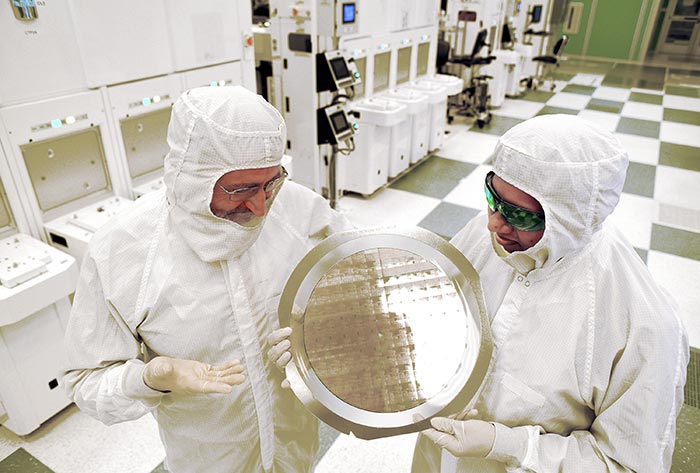-
Tips for becoming a good boxer - November 6, 2020
-
7 expert tips for making your hens night a memorable one - November 6, 2020
-
5 reasons to host your Christmas party on a cruise boat - November 6, 2020
-
What to do when you’re charged with a crime - November 6, 2020
-
Should you get one or multiple dogs? Here’s all you need to know - November 3, 2020
-
A Guide: How to Build Your Very Own Magic Mirror - February 14, 2019
-
Our Top Inspirational Baseball Stars - November 24, 2018
-
Five Tech Tools That Will Help You Turn Your Blog into a Business - November 24, 2018
-
How to Indulge on Vacation without Expanding Your Waist - November 9, 2018
-
5 Strategies for Businesses to Appeal to Today’s Increasingly Mobile-Crazed Customers - November 9, 2018
IBM claims breakthrough in developing tiny computer chip
(NYSE:IBM) Research in collaboration with the GlobalFoundries, Samsung Electronics Co., Ltd. (LON:BC94) (KRX:005930), and equipment suppliers produced the first 7nm (nanometer) node test chips with functioning transistors.
Advertisement
“7nm node has remained out of reach due to a number of fundamental technology barriers”, says IBM, with the most notable among them being the material properties of silicon itself.
The computer giant said that it has overcome technical hurdles to make ultra-dense chips, with around four times the capacity of today’s most powerful chips, the BBC reports. The new 7nm technology further increases this to 50 percent as compared to IBM’s 10nm process.
After selling its semiconductor facilities to Global Foundries, IBM still manages to push forward its research in microchip manufacturing.
IBM says the prototype processors make the beginning of a new era of smaller semiconductors that will ensure the continuation of Moore’s Law.
GlobalFoundries announced last week that it has completed its acquisition of IBM’s Microelectronics business.
Creating a working 7nm chip required moving past pure silicon, IBM revealed. It also had to develop new manufacturing processes to achieve working transistors. IBM officials said the 7nm processors will be used for the company’s Power systems and mainframes to run modern workloads such as big data analytics, cloud services and mobile applications.
“It’s a major step”, said Mukesh Khare, vice president of semiconductor technology at IBM Research, which is investing $3 billion over five years in a joint project with GlobalFoundries and the State University of New York in semiconductor research.
Each transistor, which in computers act like switches, in IBM’s new almighty chip will measure at around seven nanometers in diameter – this is significantly smaller than the 10 to 14-nanometer transistors we now use. It had also found a way to use very narrow wavelengths of ultraviolet light to etch components and stack transistors closer together so they did not interfere with each other.
Yes, definitely! Computer chips have for decades been governed by something called Moore’s Law. These techniques are industry-first innovations.
Advertisement
The announcement comes as rumours spread that Intel is struggling to hit its next shrinkage goal, delaying its planned 10nm Cannonlake product in favour of a tweaked 14nm variant built on the same process size as its current chips.




























